I am currently participating in the genealogy blog challenge 52 Ancestors in 52 Weeks set by Amy Johnson Crow. You can see the earlier weeks under the My Blog option on my website.
The Week 6 topic left me a bit stumped for inspiration. I ended up thinking of John Carnegie my GGG grandfather who was born in 1837 in Montrose, Angus, Scotland. He was the son of James Carnegie and Elizabeth (Betsy) Sharp. When I first saw Montrose on certificates, I had no idea of where it was in Scotland. Maps are essential as you really do need to know where a place is and what else is in the local area.
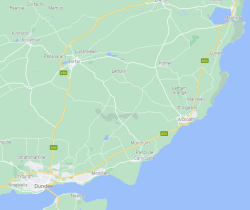 Montrose north of Dundee via Google Maps
Montrose north of Dundee via Google Maps
Montrose was on the coast and fishing and shipping were local industries. Perhaps not surprisingly, John Carnegie was a sailor and I believed that he travelled to the USA as a later gaol record revealed tattoos which included the American colours on his right arm, bracelets on both wrists plus the Montrose coat of arms on his right breast. I have found details of his career as a merchant seaman through Findmypast. John must have had a fantastic life working on board ships.
On 23 December 1861 in Dundee, Angus, Scotland he married Helen Stratton. She was also born in Montrose in 1839. Obviously, John Carnegie’s seafaring days were over as he settled down to married life with Helen. Their first child, Helen was born in 1862 and their next child John was born in 1864. Both children were born in Montrose.
Then John and Helen Carnegie made the big decision to emigrate to Queensland, Australia with their two young children. They arrived in Brisbane in 1865 on board the Sunda. I’m going to skip the next 10 years in their life and tell it later as Helen’s story.
In the early 1870s the family lived in Grafton, New South Wales and another two children had been born. Georgina Carnegie was born in 1867 in Brisbane and Clara Stanley in 1872 in Grafton. Their son John had died in Brisbane in 1866 as an infant and Georgina died aged 4 years from diptheria and was buried in Grafton cemetery.
John and Helen and their two daughters moved back to Queensland and settled at Toorbul on the Pumicestone Passage, just north of Brisbane in 1877.
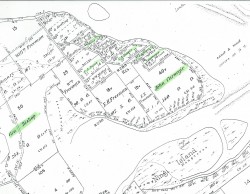 Map of Toorbul area showing John Carnegie’s selections
Map of Toorbul area showing John Carnegie’s selections
Here John Carnegie became a successful oyster farmer. At the Queensland State Archives, I found two land selection files which gave details of his progress over the years before deeds of grant were given for both properties. There were also maps which clearly showed his properties and that of his neighbours. Finally, reference to the theme of this week’s challenge.
However, the most surprising discovery was a very faint map of the oyster leases in Pumicestone Passage. This gave me the exact location of John Carnegie’s oyster leases. The leases were just off John’s property and would have been easy to access.
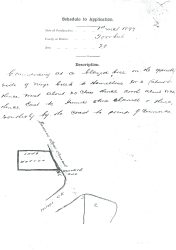 Application to select land prior to surveying the area March 1877
Application to select land prior to surveying the area March 1877
Unfortunately, the Passage was infested with whelk tingle in the late 1880s. The Fisheries Officer Mr Carr reported in 1886 that John was “holding three banks north of Ninghi Creek and that he held a freehold selection adjacent”. After Mr Carr informed John that whelk tingle had been discovered on his banks, John “immediately, with the assistance of his children, collected several hundredweight of whelk tingles off his banks”. That would have been back breaking, tedious work.
An even worse threat to the oyster farmers was the discovery of mud worm in 1895 in the oyster banks in the Coomera River. It soon spread throughout Moreton Bay. Although not harmful to people, it was often fatal for oysters and infected oysters were not acceptable to the market. All oyster farmers were similarly affected, and it was still rampant in Pumicestone Passage until 1905 when it finally declined.
By that time, John Carnegie had died in 1903 at his home ‘Karisma’ at Toorbul. John must have had a very interesting life. His wife Helen died in 1913 and was buried with John in the Toorbul cemetery. Today, their grave is the only one left and the local council has designated the cemetery an historic area.
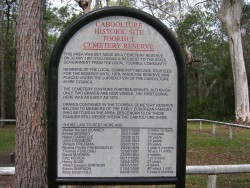
Historic Toorbul cemetery
Maps are pointers for our research. They show where someone lived and often occupations are relevant to that area. We can see this with John Carnegie’s life as a merchant seaman in Scotland and later as an oyster farmer Queensland, Australia. What happened to Toorbul after the passing of those pioneer settlers?
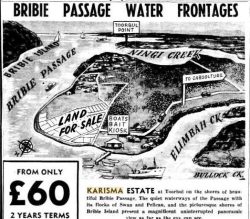
Karisma estate, Toorbul 1952 via Trove
Remember, Karisma was the name of the Carnegie family home. Maps add an interesting dimension to your family story. Don’t neglect this resource in your family history research.

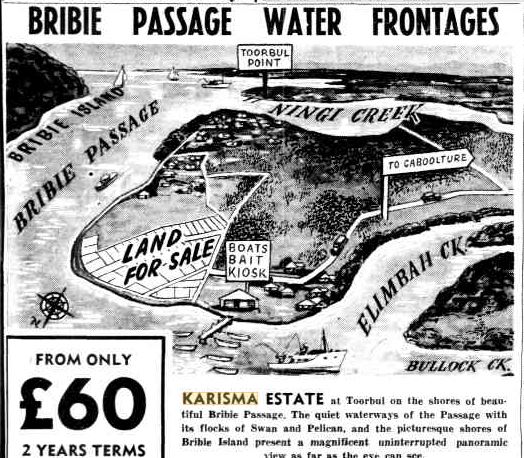
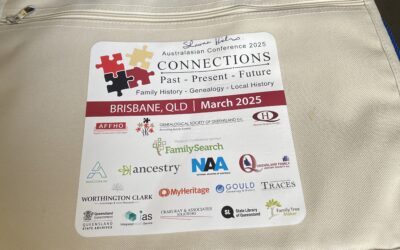
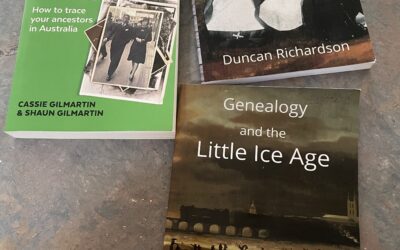
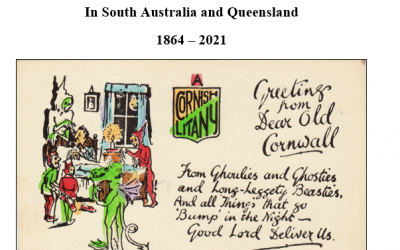

A fantastic contribution for the maps theme Shauna, Imagine your rellies being the only grave left in the cemetery!